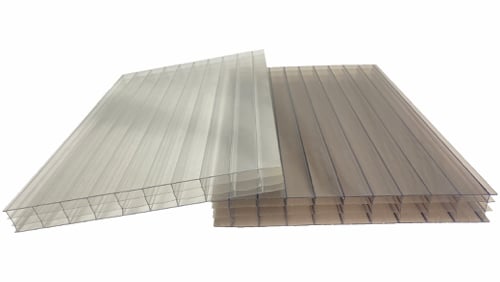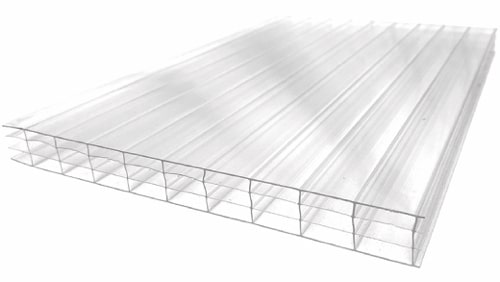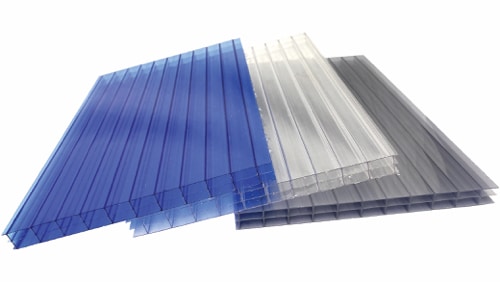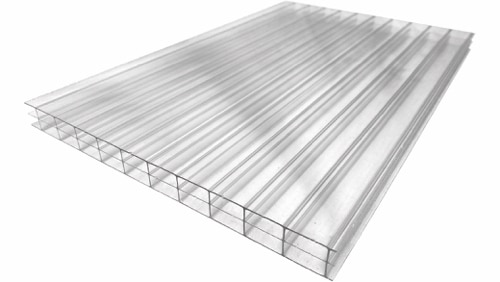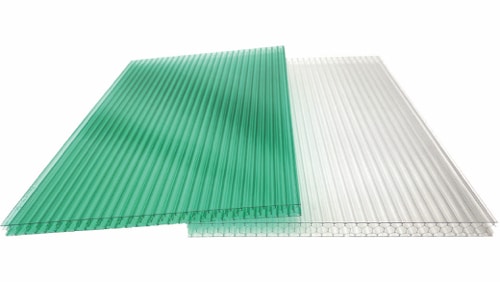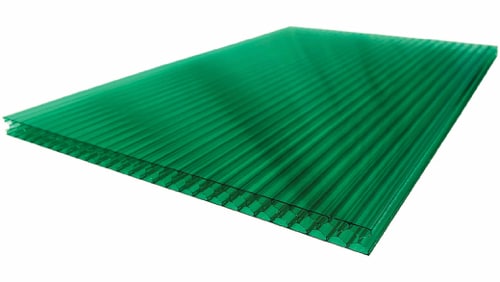How to Select the Ideal Greenhouse Roof Materials?
When it comes to building or upgrading a greenhouse, one of the most crucial decisions you’ll make is choosing the right greenhouse roof materials. The roofing material you select will have a significant impact on the amount of light transmission, insulation, durability, and overall performance of your greenhouse.
In this article, we’ll explore the pros and cons of four popular greenhouse roof materials: glass, fiberglass, polyethylene film, and double-layered polycarbonate, to help you make an informed decision for your greenhouse project.
Glass Roofing
Glass has been the go-to material for greenhouse roofing for centuries, and for good reason. It is the most transparent and light-permeable option available, allowing maximum sunlight to reach your plants. When properly installed, glass can be a long-lasting and durable solution, making it a popular choice for permanent greenhouses, sunrooms, and solariums.
Tempered glass, which is significantly thicker than regular glass, offers enhanced strength and safety. It is less likely to shatter or crack under pressure and can withstand the weight of heavy, wet snow for extended periods without collapsing. This makes tempered glass an excellent choice for greenhouse roofs in regions with harsh winter conditions.
However, glass greenhouse roofing does come with some drawbacks. It typically has the highest initial cost compared to other greenhouse roof materials, due in part to the price of the glass itself and the need for sturdy framing to support its weight. Proper construction and sealing are crucial to prevent leaks, and glass is a relatively poor insulator compared to other roofing options.
Advantages of Glass Greenhouse Roofing:
- Tempered glass is much stronger and thicker than regular glass, significantly reducing the risk of shattering or cracking.
- If broken, tempered glass shatters into small, relatively harmless fragments.
- Laminated glass is extremely durable and can withstand severe weather conditions, such as high winds and heavy rain.
- Laminated glass can block up to 99% of harmful UV rays.
- Clear glass provides an aesthetically pleasing appearance for your greenhouse.
- If a glass pane breaks, it is easy to replace.
Disadvantages of Glass Greenhouse Roofing:
- Glass is one of the most expensive greenhouse roofing materials.
- Improper sealing of glass roofing can lead to significant leaking issues.
- Glass is a poor insulator compared to other materials.
- With the exception of laminated glass, glass is one of the most breakable greenhouse roofing options.
- Regular cleaning of glass panes is necessary to ensure optimal light transmission into the greenhouse.
Fiberglass Roofing
Fiberglass panels or sheets offer a more affordable option compared to tempered glass for greenhouse roofing. This material is relatively durable and can last for more than 15 years in permanent greenhouses. Being much lighter than glass, fiberglass does not require the same heavy-duty, expensive framing, making it a more cost-effective choice.
Despite its lighter weight, fiberglass is strong enough to withstand exterior elements and relatively harsh weather conditions. This makes it a suitable option for greenhouse owners who want a long-lasting, resilient roofing material without the high cost of glass.
However, it is important to note that the light transmission through fiberglass panels can diminish over time. To maintain optimal or even adequate light permeability, regular maintenance is necessary. This may involve cleaning the panels or applying a protective coating to prevent yellowing or deterioration. Additionally, fiberglass lacks the flexibility of some other greenhouse roofing materials, which may limit design options.
Advantages of Fiberglass Greenhouse Roofing:
- When installed permanently, fiberglass can last for at least 15 years.
- Fiberglass is resistant to outdoor elements and weather conditions.
- This material provides excellent insulation and diffused lighting for your plants.
- Fiberglass sheets are affordable and easy to work with.
- It is one of the most budget-friendly roofing materials for greenhouses.
- Fiberglass does not expand or contract with changes in temperature or humidity.
Disadvantages of Fiberglass Greenhouse Roofing:
- Regular maintenance is required to ensure optimal light transmission through fiberglass panels.
- Cutting fiberglass can release sharp glass fibers that are difficult to remove and can be hazardous.
- Protective clothing and equipment are necessary when handling fiberglass sheets to avoid potential health risks.
Plastic or Polyethylene Film
Plastic or polyethylene film is a flexible, budget-friendly, and easy-to-install greenhouse roofing material. It offers light permeability comparable to glass, making it an excellent choice for small, portable, or temporary seasonal greenhouses. Polyethylene film is also a quick and affordable solution for greenhouses with arched or irregular roof shapes, as it can easily conform to various contours.
Some high-quality polyethylene films are designed to last for several years, with additives that help reflect light and radiate heat into the greenhouse interior. These features can enhance the growing environment and promote healthier plant growth.
However, it is important to recognize that film coverings are not as durable as fiberglass or glass. They are more susceptible to damage from weather, UV radiation, and physical wear and tear. As a result, polyethylene film requires more frequent replacement compared to other greenhouse roofing materials, making it a less suitable option for permanent greenhouse structures.
Advantages of Polyethylene Greenhouse Roofing:
- Polyethylene is widely available, flexible, and cost-effective.
- High-grade polyethylene films can last up to five years.
- Provides excellent insulation against heat loss and noise.
Disadvantages of Polyethylene Greenhouse Roofing:
- Polyethylene is not as durable as glass or fiberglass.
- It is more vulnerable to damage compared to other roofing materials.
Polycarbonate Roofing
Polycarbonate panels have become a popular choice among engineers and designers for greenhouse construction due to their excellent heat retention properties. When it comes to energy efficiency and insulation, polycarbonate roofing sheets outperform other greenhouse roof materials, making them the ideal choice for minimizing energy costs. These panels are not only durable, with a lifespan of up to ten years, but also flexible enough to be used in curved or arched greenhouse designs, offering a versatility that glass or fiberglass cannot match.
(Read more: Polycarbonate Properties | A Must-Read PC Material Guide)
Advantages of Polycarbonate Roofing:
- Polycarbonate roofing is exceptionally strong and durable compared to other roofing materials.
- It is the best material for roofing in terms of energy efficiency and heat retention, reducing overall energy costs.
- Polycarbonate allows sunlight and heat to pass through while blocking harmful UV rays, creating an optimal growing environment.
- The lightweight nature of polycarbonate makes it easy to handle during installation and maintenance.
- Minimal cleaning, typically once or twice a year, is sufficient to keep polycarbonate roofing in pristine condition.
(Read more: Handling, Storage & Cleaning Polycarbonate Sheets)
Disadvantages of Polycarbonate Roofing:
- Unlike glass or fiberglass, polycarbonate has a limited lifespan and may degrade over time.
- Polycarbonate material can yellow with age, which may reduce light transmission.
- The double-layer construction of polycarbonate roofing is less transparent compared to glass or fiberglass.
- If the double-layer construction is not properly sealed during installation, algae can grow in the spaces between the layers.
(Read more: Screws for Polycarbonate Roofing: Installation Guide) - Polycarbonate panels may not be readily available and often need to be purchased from specific polycarbonate roof sheeting manufacturers.
After examining the various greenhouse roof materials available, it’s clear that polycarbonate stands out as the superior choice for most greenhouse owners. With its exceptional durability, insulation properties, and UV protection, polycarbonate roofing sheets provide an optimal growing environment while minimizing energy costs. Although it may have a higher initial cost compared to some other options, the long-term benefits and energy savings make it a worthwhile investment.
If you’re looking to build or upgrade your greenhouse, consider choosing polycarbonate sheets for your roofing material. Visit Vulcan Plastic to explore our range of high-quality polycarbonate roofing sheets and learn more about their unique properties and advantages. Our team of experts is ready to help you select the perfect polycarbonate sheets for your greenhouse project, ensuring that you create a thriving, energy-efficient growing space that will provide years of bountiful harvests. Don’t settle for less than the best – contact us today and take your greenhouse to the next level!
Related articles:
5 Benefits of a Greenhouse: The Secrets to Successful Gardening
How Do Greenhouses Work? Understanding How They Function!
Designing A Greenhouse: Benefit, Considerations, and Materials!

